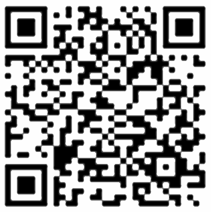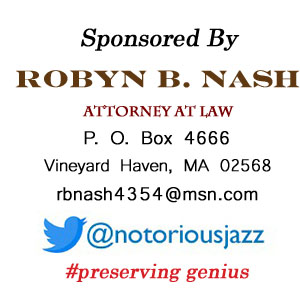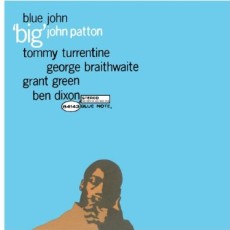
Daily Dose Of Jazz…
Big John Patton was born on July 12, 1935 in Kansas City, Missouri. His mother, a church pianist, taught him how to play the fundamentals. When he was about 13 years old, in 1948, he began to teach himself. He was inspired by the music he heard in Kansas City, but he wanted to play beyond his hometown jazz scene.
In 1954 after high school, he headed east and found professional work in Washington D.C., he found out that R&B star Lloyd Price was playing at the Howard Theater, that he had just fired his pianist and needed a new player. John played a few bars from the introduction to “Lawdy, Miss Clawdy” and was given the job.
It was a five-year relationship that gave him an education he couldn’t have gotten elsewhere. He was Lloyd’s “straw boss” and the leader, he recruited top players including drummer Ben Dixon, who encourage him to check out the Hammond B-3 organ when they played in clubs that had one. A man called Butts first showed Patton how to set up the organ and find the right registrations. When he moved to New York in late 1959, it was his friend Herman Green who played with Lionel Hampton who helped him learn how to play it.
That same year Big John formed his own Hammond organ trio. Blue Note artist Ike Quebec became his mentor, introducing him into Blue Note and to one of the most important relationships in his career, with guitarist Grant Green. He went on to work as a sideman for Lou Donaldson for three and a half years. During the 1960s he became one of the most recognizable figures on the jazz scene and was a driving force of the sound of electric organ.
Over the years he recorded for Blue Note with Harold Alexander, George Coleman, George Braith, Don Wilkerson, Clifford Jordan, Harold Vick, Johnny Griffin, Grachan Moncur III, Ron Carter, Black Star, James “Blood” Ulmer, John Gilmore, John Zorn, Jimmy Ponder, Johnny Lytle, Red Holloway, Art Blakey and Marshall Allen to name a few.
Patton’s style has been resistant to imitation because of its space and economy, often being called minimalist. But he claimed that he emulated the sounds of his favorite trumpet and reed players. By the time the Acid Jazz movement emerged in the 1980s there was a resurgence in interest in his music in the UK and he made several trips to England where he was embraced by the Acid Jazz community.
Patton continued recording until the late Nineties and he developed a loyal following in both Japan and Europe, both of which he toured in addition to his dates in the United States. He recorded as a part of the Red Hot Organization’s compilation album Red Hot + Indigo in tribute to Duke Ellington. He recorded 16 albums as a leader and another twenty-six as a sideman.
Pianist and organist Big John Patton, a major figure in the development of the funk and blues rooted jazz known as soul jazz and considered the inspiration for the Acid Jazz movement, passed away from complications arising from diabetes in Montclair, New Jersey on March 19, 2002.
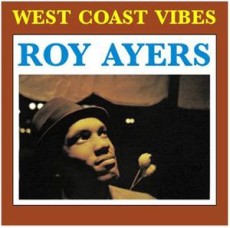
Daily Dose OF Jazz…
Roy Ayers was born on September 10, 1940 in Los Angeles, California and grew up in the epicenter of southern California Black music scene known as South Park, now called South Central. He received his first set of mallets at age five from Lionel Hampton thus leading him to the vibraphone.
He studied music attending Central Avenue area schools Wadsworth elementary, Nevins Middle and Thomas Jefferson High that also graduated Dexter Gordon. He became part of the West Coast jazz scene in the early ‘60s, played withCurtis Amy as well as Herbie Mann for four years and recorded his first album West Coast Vibes in 1963 and several albums for Atlantic Records as a post-bopper. It was during this period that he became exposed to new styles of music outside bebop.
The 70s saw the advent of jazz funk and Roy was there to help pioneer its rise. With highly successful soundtracks like “Coffy” Ayers went on to record “Mystic Voyage”, “Everybody Loves The Sunshine”, “Running Away” and a string of hits throughout the decade. By 1980 he had teamed with Fela Kuti releasing Afrobeat “Music of Many Colors, went on to produce Sylvia Striplin’s “Give Me Your Love”, and released several albums on the Ichiban label. He collaborated on the Stolen Moments: Red, Hot+ Cool project, turned his attention to house music, founded two record labels – Uno Melodic and Gold Mink, and currently is the feature of the documentary called the Roy Ayers Project.
Roy Ayers, vibraphonist, vocalist, keyboardist, producer, jazz, funk and soul composer has recorded over 50 albums during his long and prolific career and he continues to perform, record and tour.
More Posts: keyboard,vibraphone,vocal
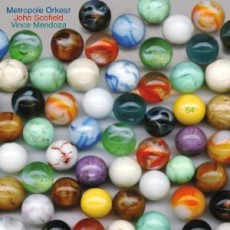
Daily Dose Of Jazz…
John Scofield was born on December 26, 1951 in Dayton, Ohio but early in his life the family moved to Wilton, Connecticut and it was here that he discovered his interest in music. He attended Berklee College of Music but left to record with Chet Baker and Gerry Mulligan followed by joining the Billy Cobham/George Duke Band touring and recording for two years.
Affectionately known as “Sco”, he went on to record with Charles Mingus, replace Pat Metheny in Gary Burton’s band and in 1976 signed with Enja Records releasing his first album “John Scofield” the next year. He formed his own band with Steve Swallow and Adam Nussbaum in ’70 and joined Miles Davis for three and half years in 1982. Leaving Miles he formed the Blue Matter Band and released three albums, in the nineties he put together a quartet that included Joe Lovano, Charlie Haden and Jack DeJohnette and recorded several albums for Blue Note. Towards the end of his tenure with Blue Note, Scofield returned to a more funk and soul jazz-oriented sound, a direction that has dominated much of his subsequent output to the present.
Scofield has played and collaborated with Joe Henderson, Joey DeFrancesco, Herbie Hancock, Pat Metheny, Bill Frisell, Pat Martino, Mavis Staples, Medeski, Martin & Wood, Jaco Pastorious, John Mayer, Hal Galper and the Metropole Orchestra along with many other well-known artists.
Guitarist John Scofield is at ease in the bebop idiom as well as he is versed in Jazz-fusion, funk, blues, soul, rock and other forms of modern American music and currently is an adjunct professor at NYU’s Steinhardt School of Education.
More Posts: guitar
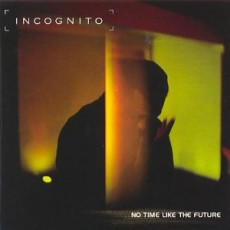
Daily Dose Of Jazz…
Jean-Paul Maunick was born February 19, 1957 in Mauritius to poet Edouard Maunick. At the age of nine his family moved to the United Kingdom and learning to play the guitar began his journey in music.
A founding member of the group Light of the World, Maunick formed the British acid jazz band Incognito in 1979 and released his debut album “Jazz Funk” in 1981. Bluey, as he is known to most, has fused funk, R&B, Brazilians rhythms and soul into a sound that has captured and kept the world’s attention. In addition to releasing fourteen studio albums as well as several live albums, remix albums and compilation albums.
His group dynamic has changed over the years as he has brought singers Jocelyn Brown, Carleen Anderson, Tony Momrelle, Imaani, Maysa Leak Kelli Sae of Count Basic and Joy Malcom to take the lead vocal position. His record production credits include artists such as Paul Weller, George Benson, Maxi Priest, and Terry Callier, having also collaborated with Stevie Wonder.
Guitarist, bandleader, composer and record producer Jean Paul Maunick, better known as Bluey, continues to explore new directions in music performing and touring worldwide.
More Posts: guitar


